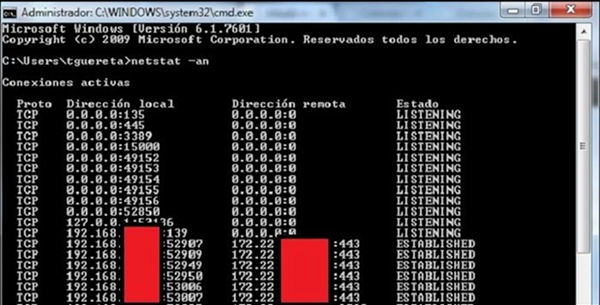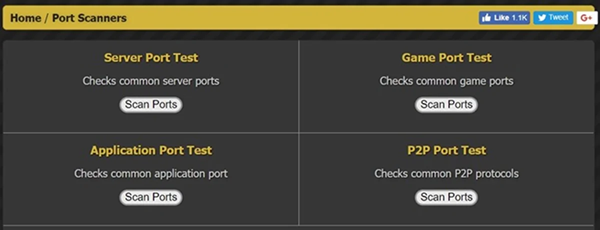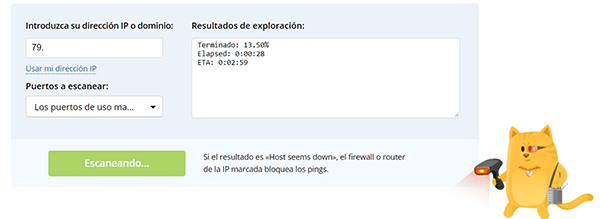Team OS : Your Only Destination To Custom OS !!
You are using an out of date browser. It may not display this or other websites correctly.
You should upgrade or use an alternative browser.
You should upgrade or use an alternative browser.
Locked VPN Port forwarding, Does the port number matter
- Thread starter cyberphy
- Start date
- Status
- Not open for further replies.
- Downloaded
- 211.3 GB
- Uploaded
- 6.9 TB
- Ratio
- 33.4
- Seedbonus
- 112,142
- Upload Count
- 0 (0)
Member for 8 years
Dear @cyberphy, i would advise to select a port number higher than that. Something like above 49152 and you can go up to 65535. That's because that is the range that is allocated for client programs that can make use of specific user allocated ports (ie torrent clients)
To be more specific here is a list with the different range of ports and what they are used for.
Port numbers 0-1023 – Well known ports. These are allocated to server services by the Internet Assigned Numbers Authority (IANA). e.g Web servers normally use port 80 and SMTP servers use port 25.
Ports 1024-49151- Registered Port -These can be registered for services with the IANA and should be treated as semi-reserved. User written programs should not use these ports.
Ports 49152-65535– These are used by client programs and you are free to use these in client programs.
Hope this helps and answers your question as well!
To be more specific here is a list with the different range of ports and what they are used for.
Port numbers 0-1023 – Well known ports. These are allocated to server services by the Internet Assigned Numbers Authority (IANA). e.g Web servers normally use port 80 and SMTP servers use port 25.
Ports 1024-49151- Registered Port -These can be registered for services with the IANA and should be treated as semi-reserved. User written programs should not use these ports.
Ports 49152-65535– These are used by client programs and you are free to use these in client programs.
Hope this helps and answers your question as well!
Last edited:
cyberphy
Member
- Downloaded
- 94.1 GB
- Uploaded
- 856.1 GB
- Ratio
- 9.1
- Seedbonus
- 17,703
- Upload Count
- 0 (0)
Member for 8 years
Ok I changed the port to 49152, is there a way to check if the port is actually open?Dear @cyberphy, i would advise to select a port number higher than that. Something like above 49152 and you can go up to 65535. That's because that is the range that is allocated for client programs that can make use of specific user allocated ports (ie torrent clients)
To be more specific here is a list with the different range of ports and what they are used for.
Port numbers 0-1023 – Well known ports. These are allocated to server services by the Internet Assigned Numbers Authority (IANA). e.g Web servers normally use port 80 and SMTP servers use port 25.
Ports 1024-49151- Registered Port -These can be registered for services with the IANA and should be treated as semi-reserved. User written programs should not use these ports.
Ports 49152-65535– These are used by client programs and you are free to use these in client programs.
Hope this helps and answers your question as well!
I am using Qbittorrent.


Upload speeds are still slow and only connecting to a few peers

Last edited:
- Downloaded
- 5.7 GB
- Uploaded
- 448.6 GB
- Ratio
- 78.11
- Seedbonus
- 134,973
- Upload Count
- 217 (223)
Member for 5 years
In GNU/Linux it is possible to know through the nmap command and in a few seconds if a port is open. This can also be done in Windows using Command Prompt, only the command is not the same.Ok I changed the port to 49152, is there a way to check if the port is actually open?
#Method 1 - Checking the ports with Netstat
Thanks to netstat, in Windows we will be able to know what ports we have open and the state in which they are at this precise moment.
In order to obtain the list, all you have to do is type the command "netstat -an" (without the quotes) from the Command Prompt, also called CMD.
Below you can see a screenshot with the result of executing this command. Data has been hidden for security reasons.

#Method 2 - WhatsMyIP
The second method that we can use is simpler and more visual, but it requires an Internet connection, since to find out what ports we have open we will use a page specialized in this type of diagnosis, specifically WhatsMyIP, in its Port Scanners section.

This method is very simple and functional, and will undoubtedly help you get an idea of the security level of your computer and especially what ports you have open and available to other users on the large network.
#Method 3 - HideMy.name
HideMy.name has several very interesting tools on its website, one of which is used to scan ports. You simply have to click on Use my IP address, then where it says Ports to scan, you select the most frequently used ports. Then you click Start Scan.

This web tool scans ports using the nmap command. Once the scan is finished, it shows the ports that are open. If you wish, you can also specify a specific port.
HideMy.name also allows you to check which ports a domain has open. The process is the same, you don't need to know the IP address, just enter the URL.
There are more methods and tools to know what ports you have open, although it seems unnecessary to provide more information that can be easily searched on Google.
I think you should carefully read the guides on how to efficiently configure your torrent client (also available on San Google).
IMHO, I don't think there is more to contribute here.
cyberphy
Member
- Downloaded
- 94.1 GB
- Uploaded
- 856.1 GB
- Ratio
- 9.1
- Seedbonus
- 17,703
- Upload Count
- 0 (0)
Member for 8 years
it looks like port 16000 is open, is that ok for seeding torrents?In GNU/Linux it is possible to know through the nmap command and in a few seconds if a port is open. This can also be done in Windows using Command Prompt, only the command is not the same.
#Method 1 - Checking the ports with Netstat
Thanks to netstat, in Windows we will be able to know what ports we have open and the state in which they are at this precise moment.
In order to obtain the list, all you have to do is type the command "netstat -an" (without the quotes) from the Command Prompt, also called CMD.
Below you can see a screenshot with the result of executing this command. Data has been hidden for security reasons.

#Method 2 - WhatsMyIP
The second method that we can use is simpler and more visual, but it requires an Internet connection, since to find out what ports we have open we will use a page specialized in this type of diagnosis, specifically WhatsMyIP, in its Port Scanners section.

This method is very simple and functional, and will undoubtedly help you get an idea of the security level of your computer and especially what ports you have open and available to other users on the large network.
#Method 3 - HideMy.name
HideMy.name has several very interesting tools on its website, one of which is used to scan ports. You simply have to click on Use my IP address, then where it says Ports to scan, you select the most frequently used ports. Then you click Start Scan.

This web tool scans ports using the nmap command. Once the scan is finished, it shows the ports that are open. If you wish, you can also specify a specific port.
HideMy.name also allows you to check which ports a domain has open. The process is the same, you don't need to know the IP address, just enter the URL.
There are more methods and tools to know what ports you have open, although it seems unnecessary to provide more information that can be easily searched on Google.
I think you should carefully read the guides on how to efficiently configure your torrent client (also available on San Google).
IMHO, I don't think there is more to contribute here.
- Downloaded
- 5.7 GB
- Uploaded
- 448.6 GB
- Ratio
- 78.11
- Seedbonus
- 134,973
- Upload Count
- 217 (223)
Member for 5 years
@MisterC already answered that question with a detailed post (read it!)it looks like port 16000 is open, is that ok for seeding torrents?
This thread was created today, but it's turning into chit-chat, everything the OP asked has already been answered.
And we are in a vicious circle because he does not read what is advised, nor does he have the will to understand or search for the basic information of his torrent client on Google.
Completed.
- Status
- Not open for further replies.
